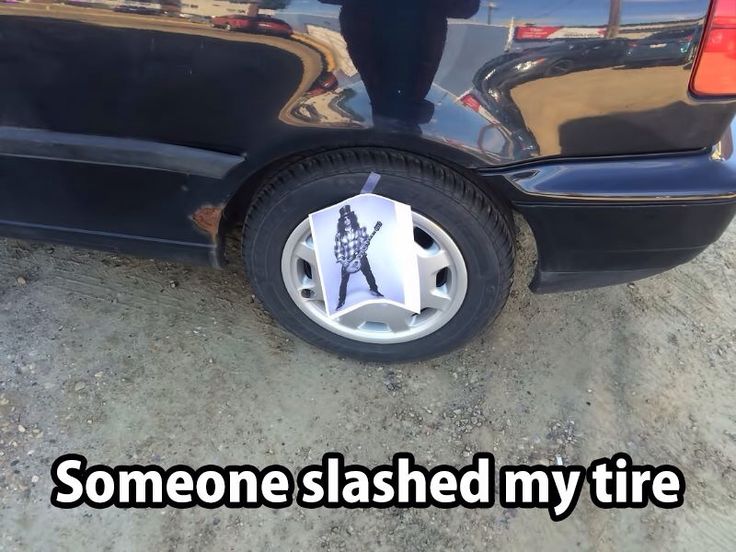If your tire has multiple clean, straight wounds along the tire wall, it has probably been slashed. In that case, you’ll want to collect as much evidence as you can, file a police report, and report the incident to your car insurance provider.
There are few sights as unwelcome to car owners as that of a slashed tire. Whether it happens in your driveway or in a parking lot, you’ll be stuck where you are and feel pretty frustrated. But, how do you tell if your tire was slashed or it was just regular wear and tear?
Jerry
, the
top-rated
app for
car insurance
shopping, is walking you through how to tell if your tires were slashed or blown. We’ll tell you some of the telltale differences between slashed and blown tires and—if you determine that your tires met their end at the pointy end of someone’s knife—the steps you need to take to prove someone slashed your tires.
Compare insurance quotes from 50+ carriers with Jerry in under 45 seconds
ZIP Code
ZIP Code
Find Savings!
Find Savings!
4.7/5 App Store Rating. Trusted by 2+ Million Customers.
Signs your tire was slashed
Before you jump the gun and call the cops to file a report, you should get a little familiar with what a slashed tire—as opposed to a blown one—looks like. Here’s a rough idea of what a slashed tire looks like:
Multiple clean cuts
Slashed tires commonly have clean, straight wounds. Imagine if someone grabbed a piece of paper, held it upright and taut, and you ran a knife through it several times—those are the kind of markings you’d find on a slashed tire.
A slashed tire is rarely cut just once, so keep an eye out for a group or smattering of these kinds of cuts.
If you see these kinds of markings on your tire, check the surrounding area for stray sharp objects, like a box cutter or nail. Tire slashing is usually done quickly and in the heat of the moment, so it’s possible the perpetrator grabbed a nearby object instead of bringing their own knife. Finding the weapon nearby can be a huge help when filing a police report later on.
Tire slashing is usually done quickly and in the heat of the moment, so it’s possible the perpetrator grabbed a nearby object instead of bringing their own knife. Finding the weapon nearby can be a huge help when filing a police report later on.
Damage to rim and along tire wall
Chances are, a would-be tire slasher isn’t haunting local parking lots with a mechanic creeper on hand, ready to slide under your vehicle to get to the innermost part of your tire. The most likely spot for a tire slasher to strike is along the tire wall.
Not only is the tire wall outward-facing and thus easily accessible, but it’s also the softest and thinnest part of your tire, making it extremely vulnerable.
Slashing tires is messy work, so your rim may get caught in the crossfire as well. If you notice clean, straight cuts along the tire wall and damage to the tire rim, evidence would suggest that you’re the victim of vandalism.
Completely flat tire
A slashed tire will deflate much faster than a blown tire.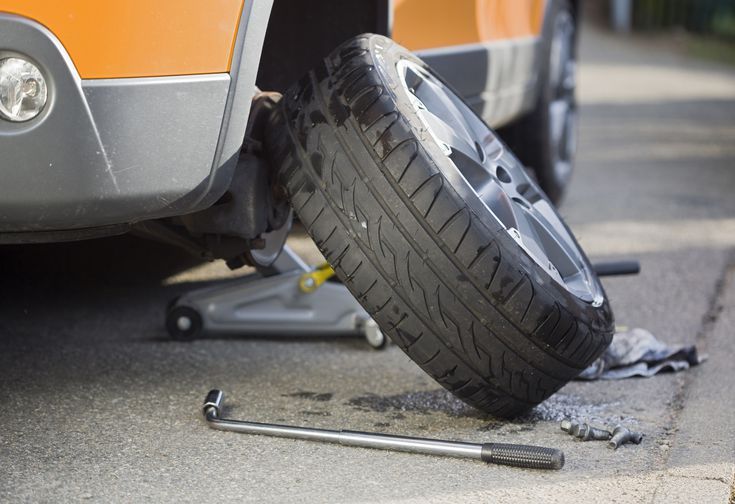 Depending on the severity of the damage, a slashed tire can go from full to flat in a matter of seconds.
Depending on the severity of the damage, a slashed tire can go from full to flat in a matter of seconds.
If your tire looks less like a donut and more like a pancake, then it was probably slashed.
Signs your tire blew out
You may have heard the phrase “when you hear hoofbeats, think horses, not zebras.” Meaning, that just because something goes wrong with your tire does not automatically mean that it happened at the hands of someone else—or that it was your fault. There are a couple of things that differentiate a slashed tire from a
blown
one:
Worn out tire tread
A thinner tire tread is much more susceptible to blowing than a newer one. If you’ve noticed that your tire treads were looking a little bald, it’s more likely that your tire blew.
Irregular, jagged wound(s)
Unlike the clean, straight wounds you’d see from slashing, a blown tire will have one giant, irregular wound. Just like earlier, imagine you are holding a piece of paper up in the air. But, instead of cutting it with a knife, imagine ripping a hole in the middle with your hands. That’s the kind of craggy, uneven opening you can expect on a blown tire.
Just like earlier, imagine you are holding a piece of paper up in the air. But, instead of cutting it with a knife, imagine ripping a hole in the middle with your hands. That’s the kind of craggy, uneven opening you can expect on a blown tire.
Dangling pieces of rubber
Although slashing a tire is messy work, it is positively orderly in comparison to a blown tire. After it blows, your tire will look torn and be hanging off the tread. Keep in mind that a blown tire is something that just exploded, so it will certainly look like it has!
Tire bulge
Perhaps the most telltale sign of a blown tire is the presence of a tire bulge. A hole or small puncture wound in your tire causes this little blister to form along the sidewall, so feel around for it before determining whether your tire was slashed or blown.
How to prove someone slashed your tires
If after careful examination you conclude that your tires have been slashed, you’ll want to seek justice. Here’s what you’ll need to do:
Here’s what you’ll need to do:
Check for CCTV footage
Camera footage can be invaluable in any police investigation. If the slashing occurred somewhere like a parking lot, tell someone who works there what happened right away. They may be able to help you get your hands on CCTV footage which could help identify the vandal.
Or, if the slashing occurred in your home driveway, check your home security footage if you have a system in place.
Ask around
Gathering witnesses is a pivotal part of proving your tires were slashed. A signed witness statement is a golden ticket in a tire slashing investigation, so ask bystanders if they saw anything go down while you were away from your vehicle.
A tire slashing in your driveway can perhaps feel a little more targeted and unsettling. In that case, ask your neighbors if they’ve seen anyone suspicious lurking around or if they’ve been the recent victims of tire slashings as well.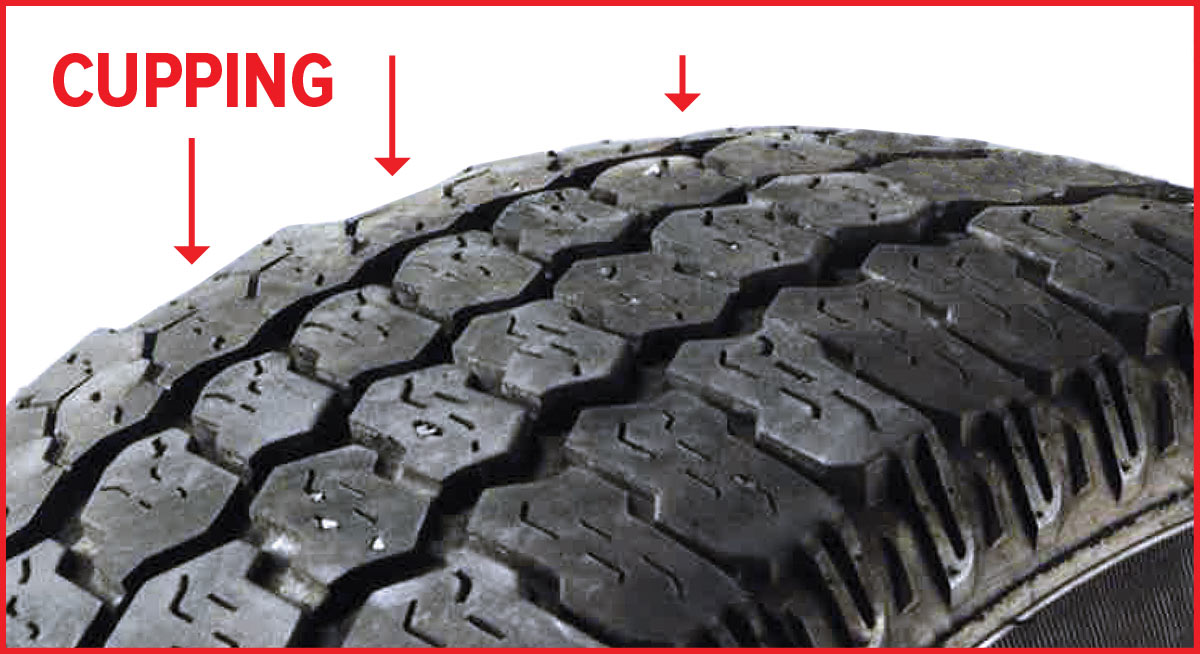
Document the damage
You will need to be able to provide a clear picture of what happened for both the police report and your insurance claim, so take as many photos and videos of the entire scene—not just the damaged tire—as you can.
It’s helpful to capture visuals from different angles to make sure you’re including as much information as possible.
File a police report
Now, with all of your evidence in hand, it’s time to call your local police department to report the crime. You’ll need to bring:
Be prepared to answer some basic questions about when and where the incidence occurred and how many tires were slashed. Slashing tires is usually a misdemeanor (which may be punished by fines or even jail time), and the police department will act accordingly.
File a claim with your insurance provider
The last step in proving that someone slashed your tires is to
file a claim with your insurance
.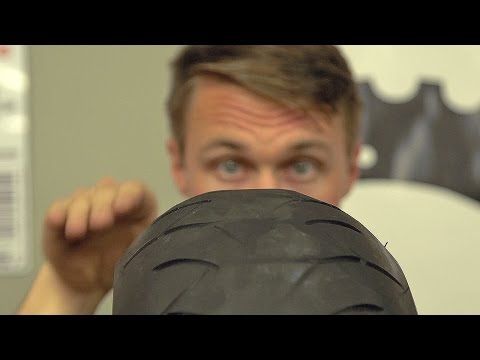 Give them a phone call and explain to them what happened, and be ready to provide them with your police report.
Give them a phone call and explain to them what happened, and be ready to provide them with your police report.
Now, the million-dollar question:
will your car insurance cover slashed tires
? The answer lies with what kind of insurance coverage level you’ve got.
Comprehensive
and
collision
coverage should help offset the cost of repairs, but liability coverage alone will leave you high and dry in the event your vehicle is damaged.
Find great car insurance without the hassle
Car insurance was made for moments exactly like these—when something completely out of the blue happens and harms your vehicle. When you shop for your insurance policy with licensed broker
Jerry
, you’ll be able to customize a car insurance plan that fits your unique budget and needs.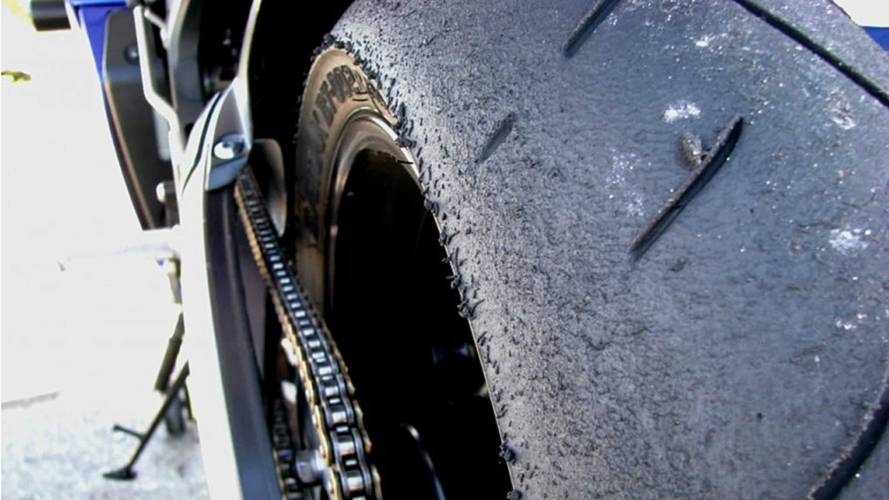
Jerry is the
number-one-rated insurance app
for a couple of reasons: it really works, it’s easy to use, and can save you an average of over $800 a year.
Just download the Jerry app or go to getjerry.com. In less than 45 seconds, Jerry collects all of your information from your existing insurer. Choose from competitive quotes from top insurance companies and Jerry takes care of the rest.
“Super cheap!
Jerry
saved me over $4500 during the entire year. The money really adds up.” —D’Shawn G.
ZIP Code
ZIP Code
Find Savings!
No long forms. No spam calls. Free Quotes.
4.7/5 App Store Rating, 8,100+ Reviews
Trusted by 1.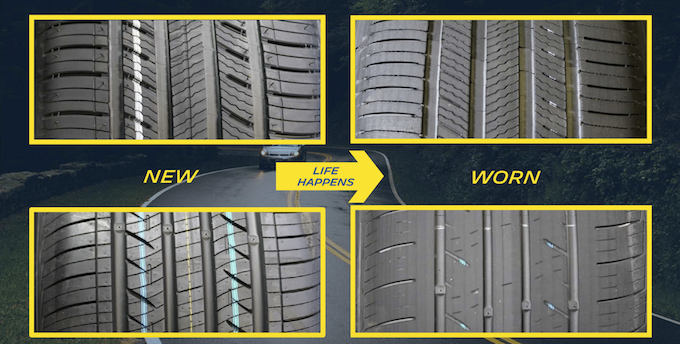 5+ Million Customers.
5+ Million Customers.
Last Updated November 11, 2022
TireHungry.com is reader-supported. When you buy through links on our site, we may earn an affiliate commission at no added cost to you
The ability to determine whether or not your tire has been slashed can be tough. You must examine the type of wound on your tire to determine whether or not it was caused by deliberate activity on your part. You can also search the surrounding area for any sharp objects that match the size of the hole in your tire.
Following victimization, you might consider installing a spy camera in your vehicle to record any future incidences. This camera will assist you in presenting evidence to the authorities in order to apprehend the person who committed the crime.
What's In This Guide?
The sidewall of a tire is a typical target for vandals since it is exposed to the elements.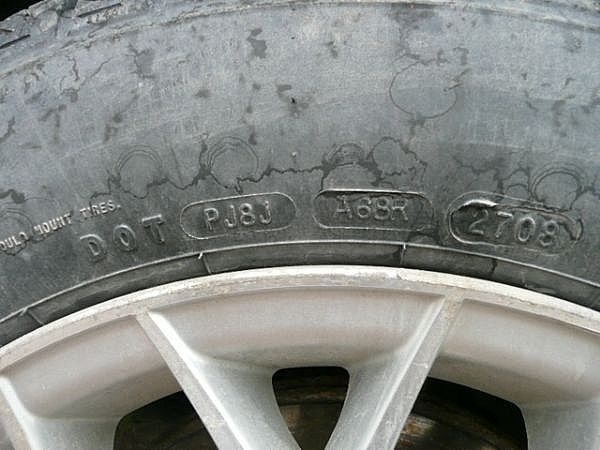 The sidewall of the tire is the thinnest part of the tire, and a sharp item such as a screwdriver or a Swiss knife can be used to easily penetrate it by the offender.
The sidewall of the tire is the thinnest part of the tire, and a sharp item such as a screwdriver or a Swiss knife can be used to easily penetrate it by the offender.
Given that you are aware of the fact that you have not traveled on an off-road trail or driven on a road that is littered with debris, or that you have not encountered any potholes or curbs, you have the right to suspect that someone may have purposefully slashed your tire. This tire’s tread section presents significant difficulty to cut due to its thickness, and it would require a significant amount of force to break through it.
Take a Look at How the Damage AppearsIt might be difficult to tell the difference between damage caused by an accident and damage caused by vandalism on your tire. In some cases, it is difficult to tell if the tire slash is caused by a pressure crack or was done purposely.
You can tell if the tool used to slash the tire is a knife since the cut is straight and smooth on the tire, which makes it easy to identify. Most road debris-induced scratches do not follow a straight line.
Most road debris-induced scratches do not follow a straight line.
Multiple efforts may be necessary for some instances, particularly if the person slashing the tire is not a professional. The likelihood of vandalism is high if you notice numerous scratches or efforts to punch through the tire.
Look Around the Area for Any Sharp ObjectsCriminals are capable of making mistakes from time to time. You’ve certainly heard horror stories from your co-drivers about someone slashing their tire and then leaving the prick or nail that they used in the process in the area. If you come across a sharp object that corresponds to the wound on your tire, that may be enough to indicate that you were a victim.
A victim recalls one case in which a thief left a knife on the tire of a friend’s car, which she witnessed. It was a traumatic experience for her, and she decided to install a covert camera to prevent similar events in the future. That never happened again is a good thing.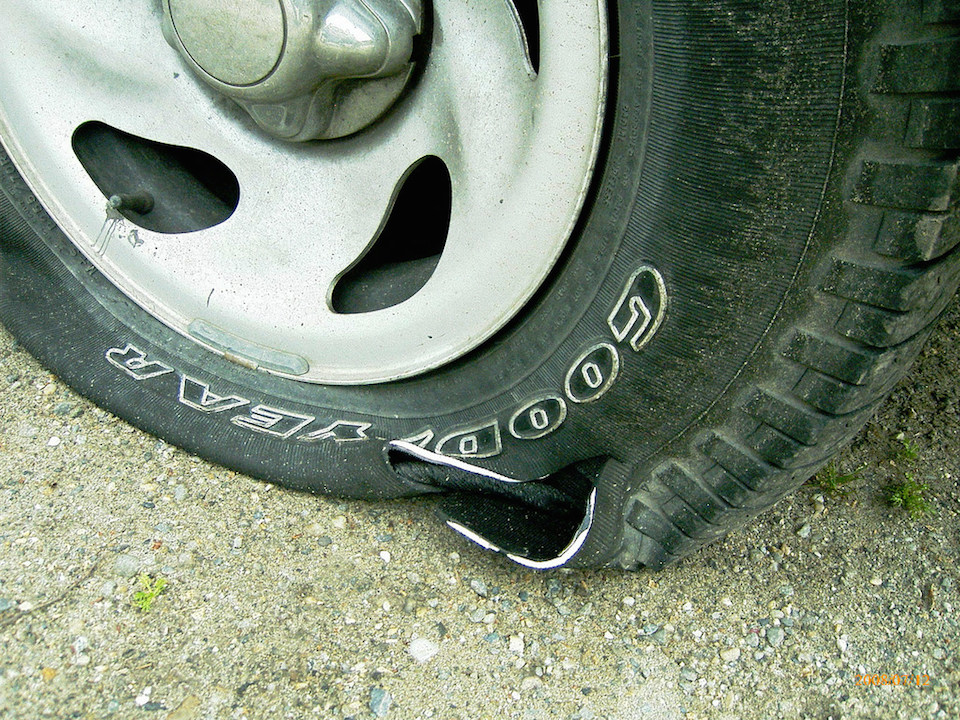
If you have a flat tire and you assume that it was the result of slashing, talk to several persons in the vicinity who may have witnessed the occurrence and get their perspective. If you are able to locate some witnesses, you should contact the authorities in order to file an initial police report.
Try to recall if you have ever had any personal conflicts with someone who you believe may have committed this act. If you don’t know anyone, it’s likely that it was just a random act of vandalism committed at a random location.
Look for CCTV FootageCCTV cameras can be found almost anywhere these days. If you have reason to believe that your flat tire was caused by slashing, walk around the location where you parked your vehicle and check for a surveillance camera. If you come across one, you can approach the person who owns the camera and request to see the recording.
Due to the fact that CCTV recordings are considered personal property, CCTV owners typically do not release their recordings.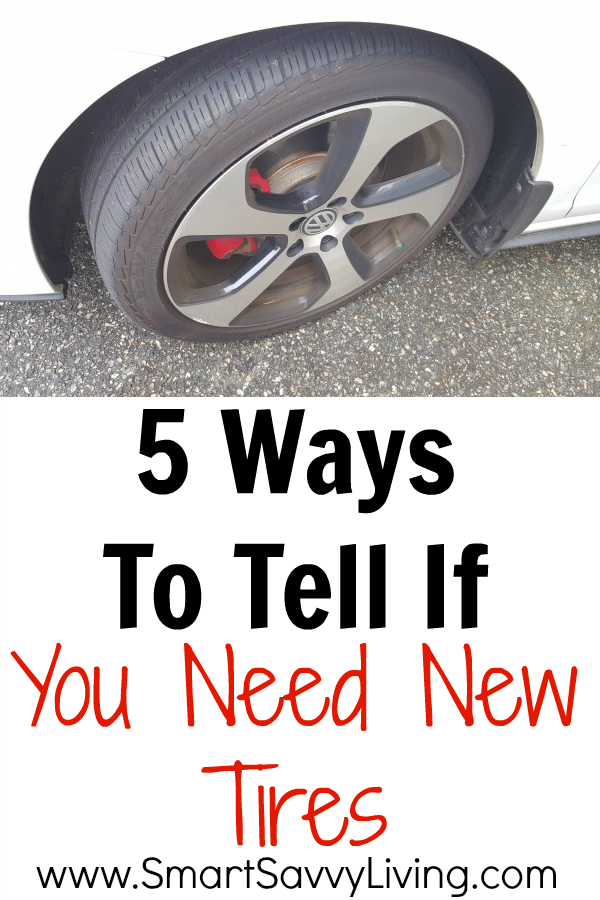 However, with the appropriate approach, you may be able to gain a chance to see it. When you explain that you are doing this for your own safety because the person who did this to you might do something else horrific, it will be more effective.
However, with the appropriate approach, you may be able to gain a chance to see it. When you explain that you are doing this for your own safety because the person who did this to you might do something else horrific, it will be more effective.
When you slash a tire, you’ll either hear a tremendous popping sound or something like a zipper sound. If the opening is large enough to accommodate the pouring air, it may cause the tire to blow up, resulting in a popping sound.
Using a little sharp object such as a nail, on the other hand, the criminal may produce a zipper sound, which may either cause the tire to blow up or cause it to progressively deflate until all air has been expelled from the tire. It is possible that you will not hear the distinctive slashing sound if the individual who is cutting uses a strategy to reduce or remove the sound in some instances.
When a Slashed Tire Deflates, How Long Does It Take?It doesn’t take long for a slashed tire to lose its air pressure. Using a knife, the tire can collapse in a matter of seconds especially if the slashed part pries open. It may even go flat on the spot if the slicing causes the tire to blow out during the process.
Using a knife, the tire can collapse in a matter of seconds especially if the slashed part pries open. It may even go flat on the spot if the slicing causes the tire to blow out during the process.
Depending on the size of the hole, slashing a tire with a small sharp tool such as a nail or a prick may take an entire night or many days to complete. If the hole is only a few millimeters in diameter, it will only cause a slow leak, which will make it take longer for the tire to go flat.
Is it Possible to Get Insurance Coverage for Slashed Tires?Basic insurance often provides coverage for bodily injury, medical or personal injury protection, and responsibility for property damage. As a result, a cut tire does not fit within the scope of this definition.
Comprehensive insurance, on the other hand, offers additional coverage, such as collision coverage and coverage for accidents that are not related to driving. Given that this is a case of vandalism, a slashed tire might be classified as a non-driving occurrence.
Consequently, if you have comprehensive insurance, you will not have to worry about obtaining a slashed tire because your insurance provider will pay the cost of the repair. However, because the claim procedure can be time-consuming, it is still advisable to exercise caution while choosing a parking spot for your vehicle.
Whenever feasible, park your vehicle in a well-lit and secure area. Install some cameras in your automobile if you have the option to do so to aid you in determining who vandalized your tires.
How to Prevent Having the Tires Slashed on Your Car You can position your guard dog around the area where the incident is most likely to occur and allow it to do what it is trained to do, which is wreak chaos on the perpetrator who is committing the act, or better yet, alert you if there is an intruder in the vicinity of the alleged incident site, as described above.
You can position your guard dog around the area where the incident is most likely to occur and allow it to do what it is trained to do, which is wreak chaos on the perpetrator who is committing the act, or better yet, alert you if there is an intruder in the vicinity of the alleged incident site, as described above.How long can you drive on a slashed tire before it becomes dangerous? According to Car Talk, it is possible to “drive several hundred yards before you severely damage the tire,” which is a significant advantage. It may be more prudent to drive slowly (no faster than 20 mph, or 32 km/h) to a safe stopping location rather than to stop on a crowded roadway in order to avoid accidents.
Can Slashing Tires Land You in Jail?There has been considerable debate about whether you can go to jail if you slash the tire of someone else’s car or not. We even briefly discussed the consequences of tire slashing here. Slashing a tire is regarded to be a felony in most jurisdictions. If a person is discovered cutting a tire in the presence of police officers, they may be arrested without a warrant being obtained. Otherwise, a police report and an arrest warrant are required before the criminal can be apprehended.
Slashing a tire is regarded to be a felony in most jurisdictions. If a person is discovered cutting a tire in the presence of police officers, they may be arrested without a warrant being obtained. Otherwise, a police report and an arrest warrant are required before the criminal can be apprehended.
If someone is arrested for slashing a tire, he or she may be sentenced to jail time, although he or she will most likely be freed and subjected to other penalties such as license suspension. If the perpetrator has a criminal record, the jail will be the home for the next few years if he or she is convicted. So, if you’re thinking about doing something like this, you should think again. Make your life as simple as possible. If you are having disagreements with someone and wish to exact revenge on that person, it is preferable to talk about the problem. You’ll both be able to sleep better at night if you do this.
However, if you need to do so for safety reasons, be prepared to deal with the ramifications. Any crime, no matter how trivial or how serious, is still a crime. It would still cause problems with your records. As a result, make an informed decision and ask yourself if it is absolutely essential.
Any crime, no matter how trivial or how serious, is still a crime. It would still cause problems with your records. As a result, make an informed decision and ask yourself if it is absolutely essential.
As described in the preceding section, which discusses how to tell whether you have a cut tire, a witness and proof may be required in some instances.
A witness to the occurrence may be able to provide you with reliable evidence. Finding a witness, on the other hand, can be difficult, particularly in a public place where people come and leave on a regular basis.
So, what else are you able to do? As previously said, you can look for a security camera or a closed-circuit television system (CCTV) in the vicinity of where you parked your vehicle. The owner of the vehicle may be willing to show you video footage of the incident if you can verify that your tire was vandalized after you find one.
In the event that you have been a victim of tire slashing, proving future incidences may be straightforward. Nowadays, with the growth of technology, it is practically hard to remain completely anonymous when someone slashes your tire.
Nowadays, with the growth of technology, it is practically hard to remain completely anonymous when someone slashes your tire.
You can purchase a camera to use in order to capture the events that take place in the area where you regularly park your vehicle. There are a lot of alternatives available when it comes to deciding which camera to place in your vehicle. You may look at the best-selling cameras on Amazon to see which ones are the be.
ConclusionPeople who have had their tires cut have consistently linked the act to someone who held a personal grudge against them. These individuals can include an enraged former, a disgruntled coworker, a cruel neighbor, and the list goes on and on and on. Perform a soul search to determine where the problem must have originated because determining the source of the problem is always the first step in determining the next course of action to pursue.
If you discover that a specific individual is connected to the act as a result of your soul searching, address that individual and observe their reaction.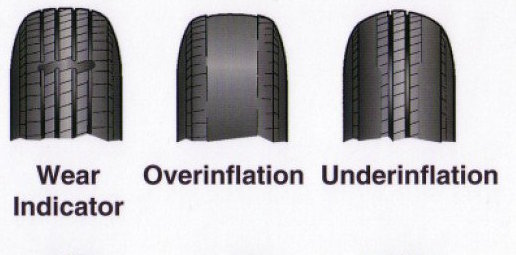 Some of them are likely to feel pleased with themselves for what they did, and some may even brag about doing it again. Therefore, it would be extremely sensible of you to record the entire conversation so that you have evidence if you chose to file charges later.
Some of them are likely to feel pleased with themselves for what they did, and some may even brag about doing it again. Therefore, it would be extremely sensible of you to record the entire conversation so that you have evidence if you chose to file charges later.
Top Tire Retailers
We update the price of used tires regularly , but CALL FOR AVAILABILITY! We'll send you a photo of the position you're interested in. We will send to your region by a transport company. If you have unnecessary tires of any size suitable for use, you can sell them to us, or exchange them for the selected ones. It will be more profitable for you than just storing them. Remember! Rubber tends to crack!
Due to the growth of technological progress in all developed countries of the world, the requirements for car tires are more and more increasing. A striking example of this is that quite recently, less than two years ago in Europe, an important criterion in the development of tires was the impact of their chemical composition on the environment.![]() And as a result, new sanctions and regulations began to be applied to car tires, requiring, when distributed in the EU, additional labeling. In 2014, a new standard containing the noise level of tires became relevant. It would seem a very strange innovation, but the competent persons of the European community put forward the issue of excessive environmental noise for consideration.
And as a result, new sanctions and regulations began to be applied to car tires, requiring, when distributed in the EU, additional labeling. In 2014, a new standard containing the noise level of tires became relevant. It would seem a very strange innovation, but the competent persons of the European community put forward the issue of excessive environmental noise for consideration.
Specialists of the authoritative organization "European Federation of Transport and Environmental Protection", who initiated this issue, stated that the noise during the movement of the car comes not only from the engine, but also from the tires. Being in constant contact with the road surface, the tire tread emits a characteristic noise that exceeds the intensity of the noise from the engine already starting from a speed of 30 km/h for passenger cars, and for trucks from a speed of 50 km/h. In addition, more intensive discussion of this issue by the environmental protection authorities began in connection with the growing popularity of tires with a wide tread in recent years.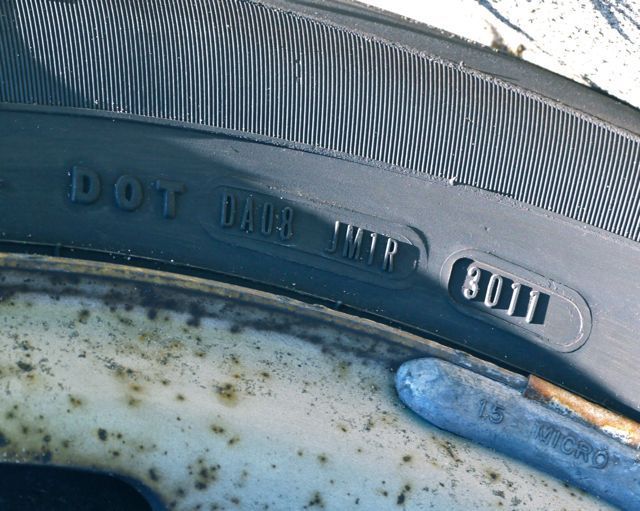
However, it is interesting that, along with the competent organizations, the issue of the noise level of car tires has recently been taken care of by the consumers themselves. This is evidenced by the increasingly frequent questions on the Internet about the noise level emitted by certain tires. In this regard, we decided to devote this article to this topic.
Tire noise intensity varies from tire to model and depends on several factors. Firstly, the noise level of a tire depends on the tread pattern itself. In the case when the tread segments have a significant number of slots, and are located on the contact patch with the road one after another without dispersion, the superposition and increase in the frequency of sound waves leads to a significant increase in the noise level. That is why most manufacturers are faced with the need to change the order of the tread segments. In this regard, tread elements have been developed with smoother pattern lines to avoid sharp corners.
Secondly, the noise level of a tire directly depends on the composition of the rubber compound from which this or that wheel is made. Accordingly, the higher the filling of the rubber compound with rubber, the better the tire fills the roughness of the coating, and the penetration depth depends on the grip. And the better the manufacturer manages to seal the contact patch, the less air gets into it, and the less air, the quieter.
Also, strong turbulences of air masses can be traced on the outer section of the wheel, in the region of the shoulder zone. The sidewalls of "quiet" tires are equipped with special "silencers". Most often they look like ribbed stripes on the sidewall of the tire. Their task is to become a sound barrier between the tread and the rim and to dampen the spreading vibration from the tire surface to the suspension and further into the car interior.
Of course, the road surface itself has a strong influence on the noise level. Accordingly, no matter what the owner of the car picks up tires, even with the lowest noise figure, the desired effect will still not be achieved on rough surfaces.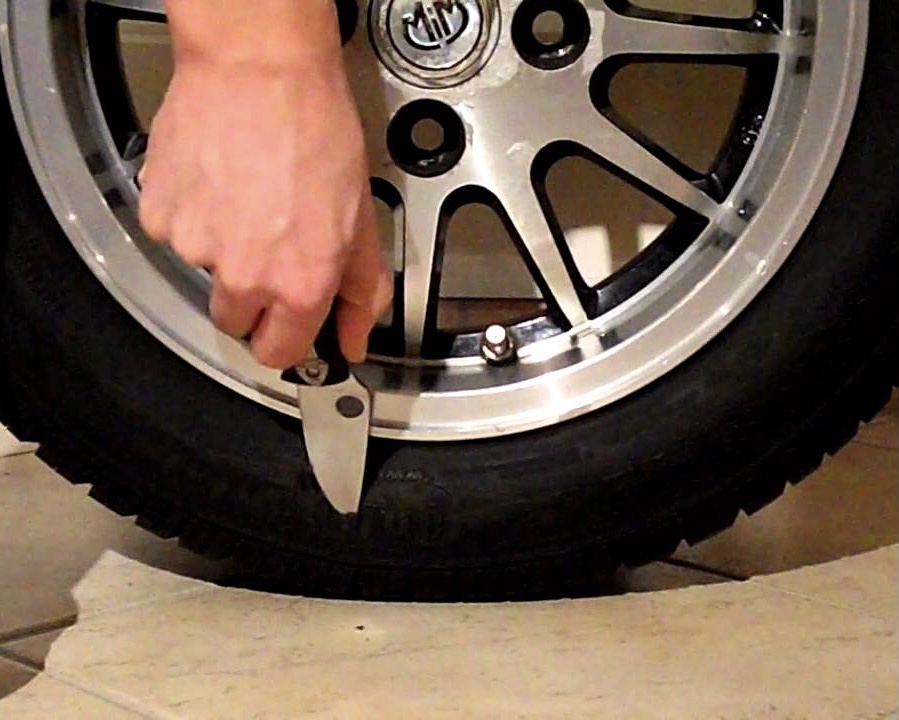 The better and smoother the surface on the roadway, the quieter the car will behave when moving along this road.
The better and smoother the surface on the roadway, the quieter the car will behave when moving along this road.
In addition to all of the above, do not forget about maintaining the level of air pressure in the tires. When the tire pressure is below normal, the area of the contact patch increases and, accordingly, a greater number of tread segments simultaneously come into contact with the road plane, which also entails an increase in noise. However, it is not worth pumping the tires too much, because during a long movement the tires undergo significant deformation and heating, so this can lead to undesirable consequences, often catastrophic.
A tire is a round piece of rubber that is the main part of a car's wheel, allowing it to move. The tire also provides traction and shock absorption while driving. Over time, stones get stuck in the tires. How to remove them, we have already told you in one of the previous articles. But stones are not the only enemies of tires. There are also nails, self-tapping screws and many other sharp objects that can easily pierce a car tire. If, having caught a self-tapping screw, a flat tire, it is clear to everyone what to do. But what if the pressure continues to hold in a punctured wheel? Can I keep driving, and if so, for how long?
But stones are not the only enemies of tires. There are also nails, self-tapping screws and many other sharp objects that can easily pierce a car tire. If, having caught a self-tapping screw, a flat tire, it is clear to everyone what to do. But what if the pressure continues to hold in a punctured wheel? Can I keep driving, and if so, for how long?
See also: Is it safe to drive with a screw in a tire?
So, if you happen to know that a nail (or self-tapping screw) is stuck in the wheel of your car, but the tire is still holding pressure or deflating slowly, then in no case try to pull the nail out. Leave it in the cover. Next, check the pressure in the wheel and, if it does not correspond to the one recommended by the automaker, inflate the wheel to the norm.
Otherwise, pulling out the nail that prevents the pressure from escaping from the tire will bring the tire to zero.
There is, of course, another option - to deflate the tire, pull out the nail, take a tire repair kit and fix the puncture yourself, and then re-inflate the wheel.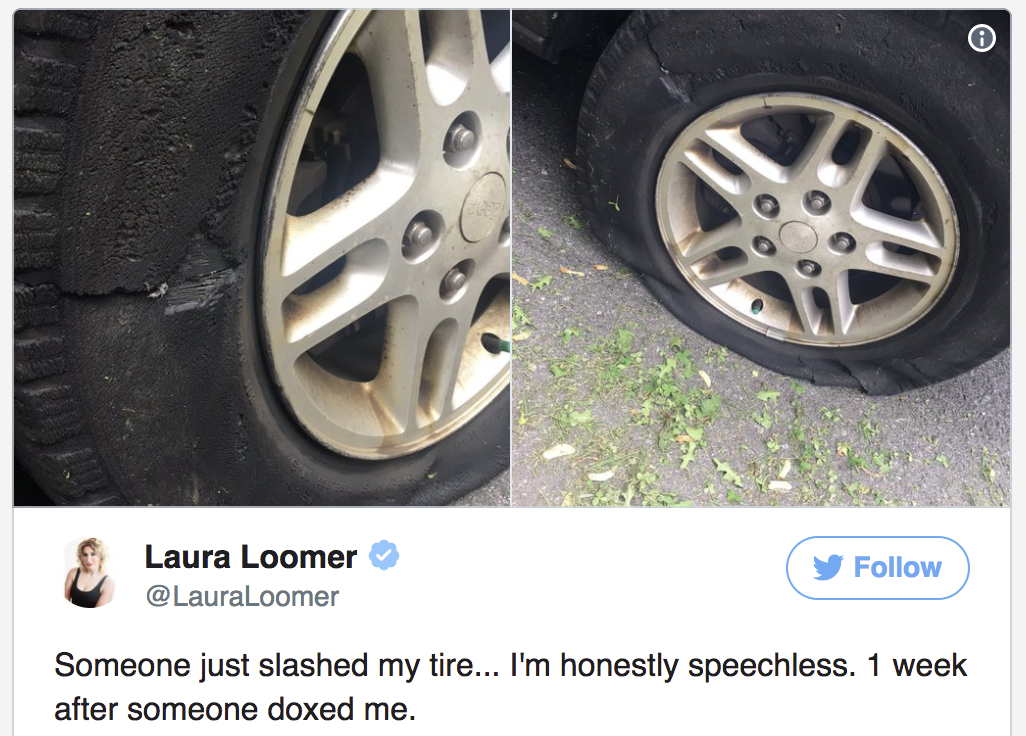 But, unfortunately, not every motorist has such a repair kit, and not everyone will be able to repair the wheel on their own. In fact, in order to install a tourniquet into a puncture, remarkable strength is needed.
But, unfortunately, not every motorist has such a repair kit, and not everyone will be able to repair the wheel on their own. In fact, in order to install a tourniquet into a puncture, remarkable strength is needed.
Unfortunately, a wheel puncture with a nail or a self-tapping screw happens quite often on our roads. Many punctures do not cause the tire to flatten almost immediately. As a result, many drivers notice that the wheel caught the self-tapping screw, not immediately. True, if your car is equipped with tire pressure sensors or a wheel rotation monitoring system (the system tells the driver about a sharp change in wheel rotation parameters, which usually occur when the pressure in the wheel changes sharply), then the security system will inform you of a possible problem in wheel.
If there are tire pressure sensors, you will be able to know which wheel has changed pressure. Unfortunately, very often this system gives false warnings (for example, when there is a sudden change in road grip or a sudden change in temperature outside). As a result, over time, many drivers stop paying attention to the warning of the tire pressure monitoring system. But in vain. After all, the system can warn of a broken wheel.
As a result, over time, many drivers stop paying attention to the warning of the tire pressure monitoring system. But in vain. After all, the system can warn of a broken wheel.
To prevent this from happening, carefully inspect the wheels for punctures after each ride. If a self-tapping screw is found, contact the tire service as soon as possible.
This is another question that is often asked by car enthusiasts on various thematic forums. We want to upset car owners right away. If you have a punctured wheel, in principle, you can not ride. After all, a car is not a toy, but a vehicle of increased danger. And not only for you and your passengers, but also for other road users. Therefore, you should contact the tire service as soon as possible, even if the punctured tire does not flatten. You are not clairvoyant and cannot know at what point the wheel will instantly lose pressure.